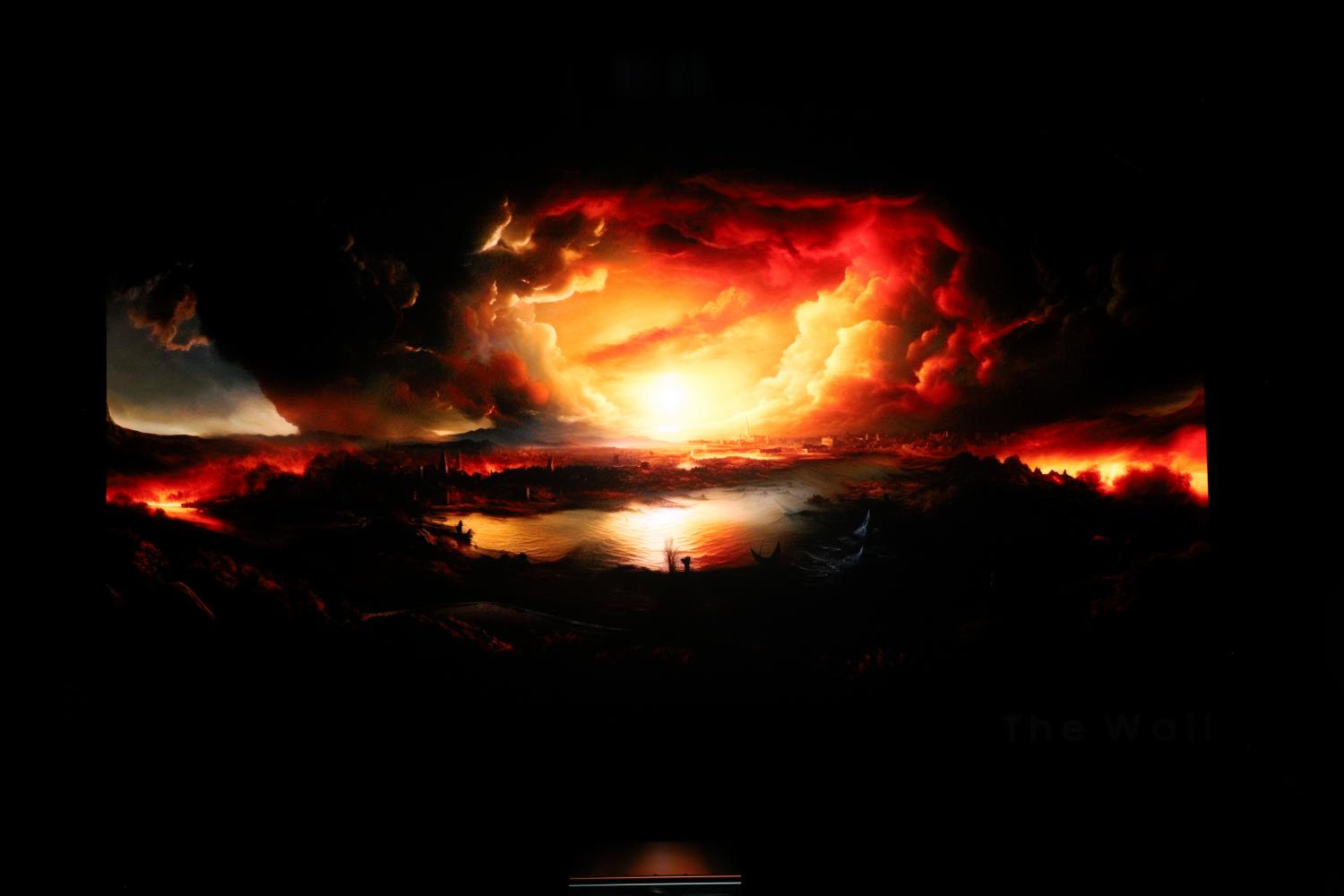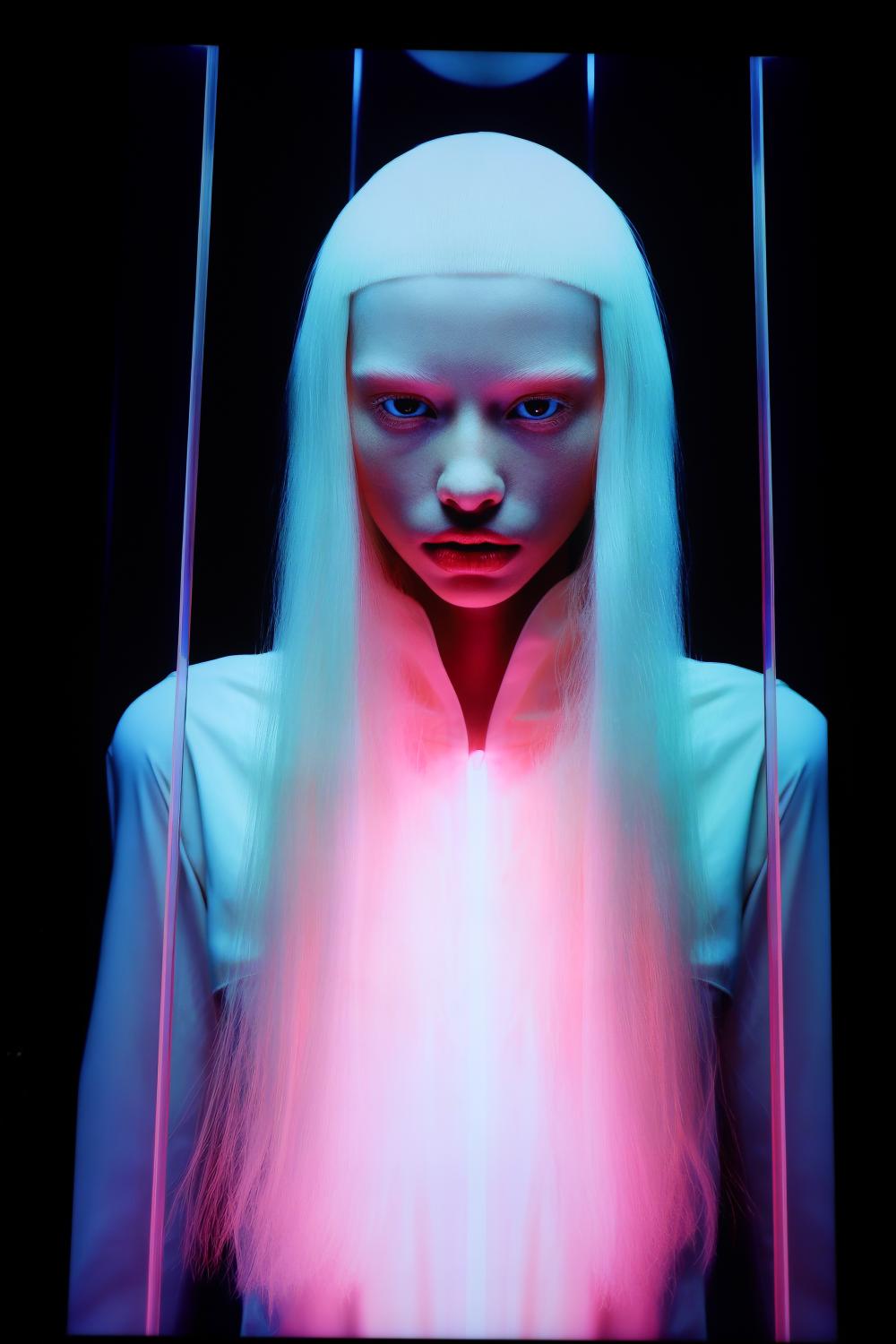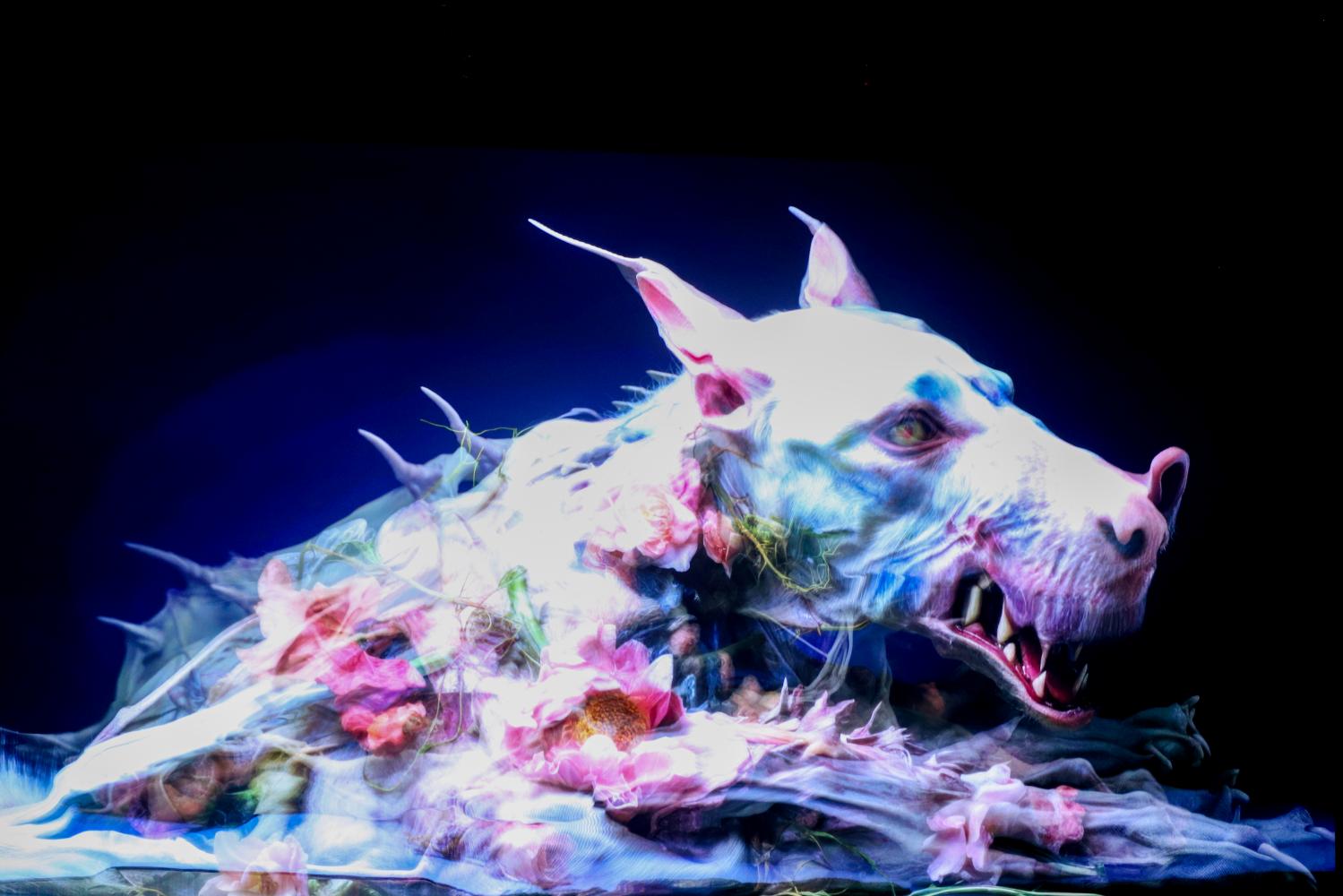Nalada Taechanarong, entrepreneur and art enthusiast, visited an exhibition in Hong Kong in 2018. There, she was captivated by Raymond Tijssen's (also known as 0010×0010) audio visual installations and interactive live show, a collaborative project with a Hong Kong artist.
Deeply impressed by Tijssen’s innovative and generative art, Nalada began collecting his video pieces and followed his work closely. This led her to appreciate Tijssen, a Dutch native based in Los Angeles, as a multidisciplinary artist who is adept at creating both visual and audio pieces that require diverse skills in various techniques. Inspired by Tijssen’s talent, Nalada attempted to persuade him to let her represent him. Upon the artist’s agreement, Nalada, who also resides in Los Angeles, established Xumiiro, a gallery specifically dedicated to digital art.
“Tijssen’s work is diverse and is not limited to a single style. While some artists rely on similar patterns and characters, Tijssen has always explored new avenues of expression. Some people question why he does not create paintings. Actually, he created numerous paintings until he felt he had fully explored the medium. He believes that artists should never stop learning, and he is always eager to embrace new technologies. I see him constantly working on something new. He is a true artist who lives and will die for art,” said Nalada.
Driven by the desire to introduce innovative digital art to her motherland, Nalada organised the exhibition “MØDVLXXR”, created by Tijssen at the Museum of Contemporary Art (Moca) in Bangkok in 2019. Building on the positive reception, Tijssen and Xumiiro along with global tech leader Samsung have now collaborated to present “Algorithmic Organisms”, which explores the intertwined realms of technology and artistry, at Moca Bangkok.
“Algorithmic Organisms” explores the significant, growing impact of algorithmic patterns that shape our lifestyles, mould our interior designs, redefine entertainment and fuel our fantasies. Integrated with Samsung’s cutting-edge visual and audio innovations, visitors are granted a unique opportunity to observe and interact with the artist’s visionary interpretation of algorithmic tales.

Above The Wall uses Samsung’s micro-LED technology.
The highlight of the exhibition is The Wall, which uses Samsung’s 146-inch micro-LED technology. This advanced technology not only delivers extraordinary quality and lifelike colours, but also provides flexibility in size.
Nalada explained that Tijssen drew his inspiration for the moving landscape on The Wall from the works of the Dutch Old Master Rembrandt. The artist aimed to create a landscape image with endless movement.
At “Algorithmic Organisms”, Samsung devices are not just screens, they represent futuristic canvases with high resolution quality. When art collectors purchase a piece, instead of receiving only a digital file, they will obtain the entire piece, including the screen which is considered art.
“Samsung devices are a new medium for art. We aim to demonstrate that artists do not have to be confined to traditional mediums. In today’s digital age, people use mobile phones for various activities, from updating news to shopping. Tijssen crafted his art pieces to align with Samsung devices, which features micro-LED with 8K resolution. In the past, people questioned the distinction between digital art and screensavers. Visitors can see a difference at ‘Algorithmic Organisms’ which presents the combination of high technology and artistic creativity,” said Nalada.
Unlike most exhibitions, “Algorithmic Organisms” does not provide descriptions for each piece because Tijssen wants viewers to interpret the work themselves.
“I discussed descriptions with him and he mentioned that art is not a book that viewers have to read. He wanted viewers to experience art. He also did not want to follow the usual pattern or be like others. He intended to present something different from his previous exhibitions. He wanted to change viewers’ attitudes, so that they do not feel the need to understand everything. Viewers are encouraged to come experience and feel the visuals and audio that he created,” Nalada explained.

Left And Right Works for ‘Algorithmic Organisms’.
After Xumiiro was established in Los Angeles, the gallery attracted attention from people in the US art industry due to Tijssen’s innovative digital work and Xumiiro’s adept planning for presentations.
“Many people were interested in Xumiiro because its concept was new. The Western world has enjoyed traditional art for many years, so people were looking for something new. I had the vision for this digital art gallery five to six years ago, before the NFT [non-fungible token] boom. I believe that I am on the right track. If I had opened a traditional gallery, I would not have been able to compete with established galleries in Los Angeles. Therefore, I looked for something new. During the Covid-19 pandemic, I presented Tijssen’s digital art on billboards in Times Square in New York. After that, many artworks have been presented on billboards,” Nalada said.
“Many artists thanked us for organising Tijssen’s exhibition. They said Tijssen’s vision encourages them to experiment with new concepts without being confined to a particular medium. They also feel supported by having a gallery to back them up.”
Nalada values traditional art and the works of all artists. However, she believes that digital art is and will be the future since everything is going digital.
“Several art collectors have mentioned that they find it difficult to preserve traditional art pieces. They have to store them in special facilities. In contrast, my clients receive high resolution files, series codes and certificates for their purchased digital artworks. They carry only a USB drive which allows them to showcase the artwork anywhere. In case of a fire at a museum or gallery, digital art stored on a USB drive can be easily transported. However, for traditional art, staff may be able to selectively save only some pieces,” she said.
On view at Moca Bangkok, “Algorithmic Organisms” is presented in three-chapter narratives: Symbiosis In Spaces; Synthetic Senses; and Syntax Error. The first chapter, Symbiosis In Spaces, is on display until Friday. Synthetic Senses will be showcased after Friday, and Syntax Error will be displayed in December.

Since digital art can use artificial intelligence, is it possible it will replace artists in the future?
“It is possible in many ways, but people should understand it is people who control AI, and artists who can control AI must be exceptional. Tijssen created an exhibition in London using AI. He is open-minded and willing to explore diverse technologies. However, his work was so remarkable that some viewers did not believe that it was created by AI. Not everyone can bring out the best in AI, and Tijssen demonstrated his genius,” said Nalada.
“Algorithmic Organisms” kicked off its world tour in Bangkok ahead of shows across Australasia, Europe and the USA. Xumiiro plans to collaborate extensively with Tijssen in 2024.
“We will continue to tour ‘Algorithmic Organisms’ to other parts of the world and produce a TV art series which includes the behind-the-scenes operation of the world tour. As a director, Tijssen has already filmed scenes in Thailand. I also believe that art is not confined to museums or galleries, so we plan to create projects to exhibit in commercial spaces.”
“Algorithmic Organisms” runs at Moca Bangkok until Jan 21, with the first chapter, Symbiosis In Spaces, on display until Friday. Admission is free. For more information, visit instagram.com/xumiirogallery and instagram.com/mocabangkok.

Raymond Tijssen, known as 0010×0010, a Dutch artist based in Los Angeles.


